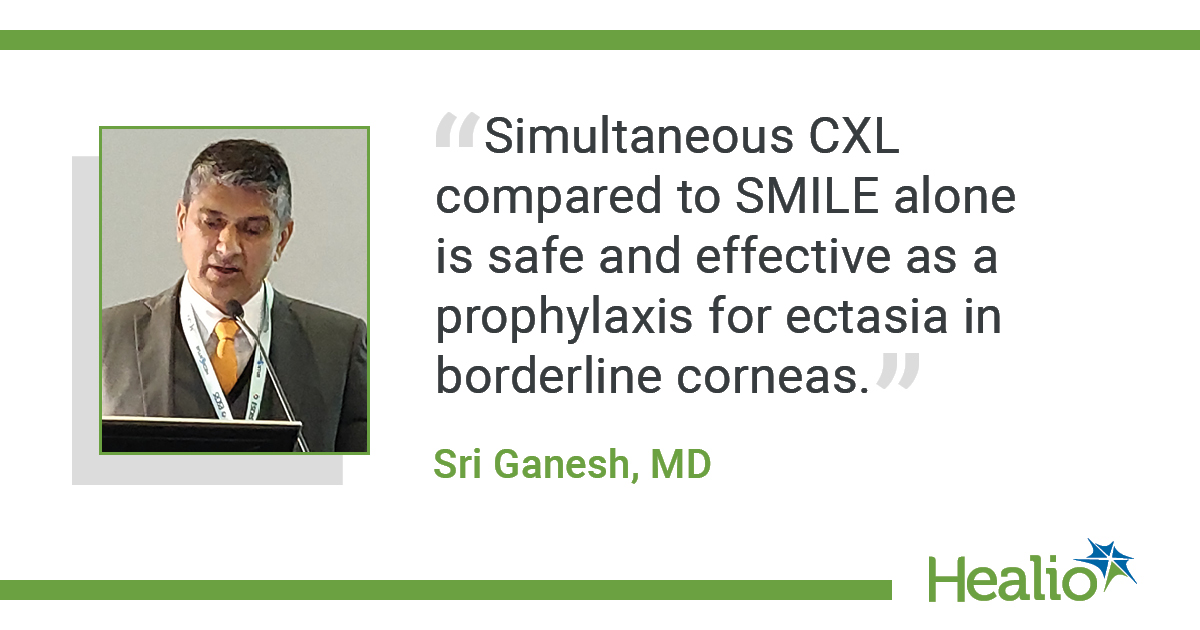Large study shows efficacy of combining cross-linking with SMILE in corneas at risk for ectasia

MARRAKECH, Morocco — ReLEx SMILE Xtra, which adds corneal cross-linking to the refractive procedure to strengthen the cornea, appears to be an effective strategy in corneas at risk for ectasia, according to a study performed in a high-volume refractive surgery center.
“The purpose of the study was to report the incidence of ectasia in eyes with normal and borderline topography and to evaluate whether SMILE with simultaneous cross-linking may be a valid option in treating borderline corneas to prevent future ectasia,” Sri Ganesh, MD, said at the European Society of Cataract and Refractive Surgeons Winter Meeting.
The outcomes of 4,630 eyes that underwent ReLEx SMILE (Carl Zeiss Meditec) for high myopia or myopic astigmatism between January 2015 and June 2018 were retrospectively analyzed. Preoperatively, 3,932 corneas were classified as normal and 698 were classified as borderline, based on criteria such as age, corneal thickness, residual bed thickness, inferior-superior asymmetry and Belin-Ambrosio display.
Based on risk assessment for surgery-induced ectasia, SMILE or SMILE Xtra was performed. All normal corneas underwent SMILE, while 176 borderline corneas underwent SMILE alone and 176 underwent SMILE Xtra. In the combined procedure, after lenticule extraction, riboflavin was applied to the interface for 60 seconds, and UVA irradiation (45 mW/cm2) was applied for 75 seconds through the cap. Total energy delivered was 3.4 J/cm2.

“Slit lamp examination postop showed mild, transient interface haze, visually nonsignificant, clearing in 3 to 6 months,” Ganesh said.
The overall incidence of ectasia was 0.15% (seven eyes) in 3 years. In the borderline group, ectasia developed in five eyes (0.71%) that underwent SMILE only and none of the eyes that underwent the combined procedure. In the group with normal topography, two eyes (0.05%) developed ectasia.
“Simultaneous CXL compared to SMILE alone is safe and effective as a prophylaxis for ectasia in borderline corneas,” Ganesh said. “The zero incidence of ectasia looks very promising, taking into account that even in eyes with normal topography this complication occurred in two cases.” – by Michela Cimberle
Reference:
Ganesh S, et al. Incidence of post-SMILE ectasia in patients with normal and borderline topography from a high volume refractive surgery center in India. Presented at: European Society of Cataract and Refractive Surgeons Winter Meeting; Feb. 21-23, 2020; Marrakech, Morocco.
Disclosure: Ganesh reports no relevant financial disclosures.

